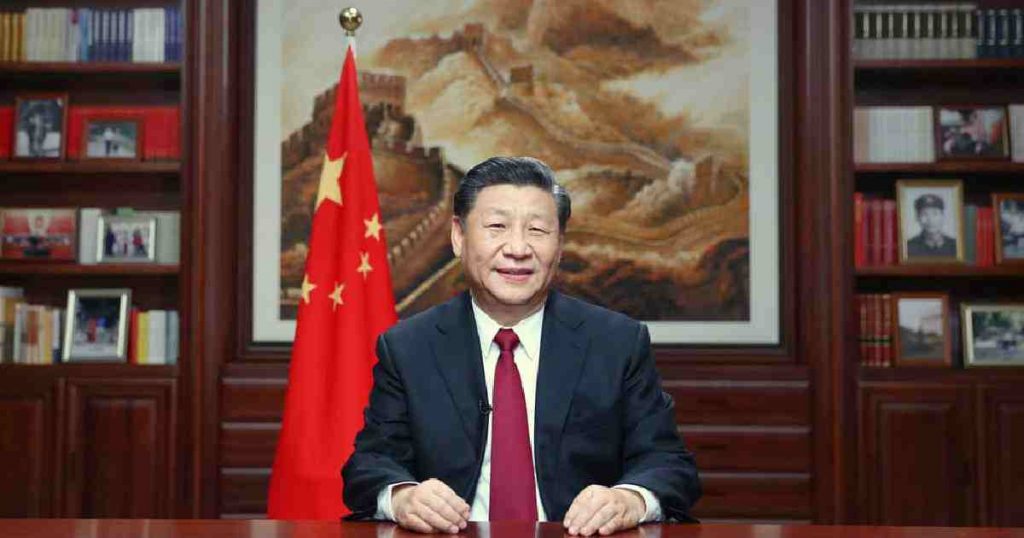President Xi Jinping visited China’s virus epicenter Tuesday for the first time since cases of a then-unidentified respiratory illness emerged in the city of Wuhan in December.
The visit came as people gradually began to return to work in other parts of China while the virus spreads to most of the world, seriously impacting travel, markets and the global economy. Following China’s example, the Italian government tightened a quarantine and imposed travel restrictions around much of the country.
The disease’s spread in China cast scrutiny on Xi’s leadership, as he was conspicuously absent from the public eye during the early days of the crisis. Initial failures to react quickly were pegged on municipal and provincial-level officials who have since been replaced.
State media reported Xi arrived in the morning in Wuhan, which has been under lockdown along with several nearby cities since late January in a disease-containment measure. The city has the bulk of the country’s more than 80,000 confirmed cases, and authorities sent thousands of medical workers and built several prefabricated isolation wards to deal with its mass of COVID-19 patients.
Xi will inspect the epidemic prevention and control work and visit medical workers, community volunteers, patients and others on the front lines, state media said. Amid questions about Xi’s involvement, Chinese Premier Li Keqiang had visited Wuhan in late January.
While China still has the majority of the world’s cases, its proportion is shrinking as the epidemic expands, especially in Europe and the Middle East. The battle to halt the coronavirus has brought sweeping new restrictions, with Italy expanding a travel ban to the entire country, Israel ordering all visitors quarantined just weeks before Passover and Easter, and Spain closing all schools in and around its capital.
“Now that the virus has a foothold in so many countries, the threat of a pandemic has become very real,” said World Health Organization chief Tedros Adhanom Ghebreyesus. “The great advantage we have is the decisions we all make as governments, businesses, communities, families and individuals can influence the trajectory of this epidemic.”
More than 113,000 people have been infected with the virus, and more than 4,000 have died of the COVID-19 illness it causes. More than 63,000 people have already recovered. But Italy’s intensifying struggle to halt the virus’ spread emerged as a cautionary tale.
“There won’t be just a red zone,” Italian Prime Minister Giuseppe Conte said, in announcing that a lockdown covering about 16 million people in the north would be expanded to the entire country starting Tuesday.
Travelers at Milan’s main train station had to show they were traveling for “proven work needs,” situations of necessity, health reasons or to return home. Ski lifts were closed after students whose classes were canceled planned trips there.
Italy’s 9,172 cases and 463 deaths are the second-most in the world. Iran has reported 237 deaths among 7,161 cases, but many experts fear the scope of the illness there is far wider than reported. South Korea reported 35 more cases Tuesday, bringing its total to 7,513 with 53 deaths.
For most people, the virus causes only mild or moderate symptoms, such as fever and cough, but it can progress to serious illness including pneumonia, especially in older adults and people with existing health problems. WHO says mild cases last about two weeks while patients with serious illness recover in about three to six weeks.
The number of new COVID-19 cases reported daily in mainland China has dwindled after consistently reaching the thousands just one month earlier. On Tuesday, the country recorded just 19 new cases over the previous 24 hours, its lowest total since it began reporting national figures on Jan. 20. China has registered 80,754 cases in total and 3,136 deaths.
Xi’s visit may indicate that the ruling Communist Party is feeling confident about the results of its anti-virus campaign, which shut down much of the world’s second-largest economy starting in late January.
Ying Yong, the party secretary of Hubei province where Wuhan is located, told local officials that preparations should be made for resuming business production and the safe and orderly movement of individuals, according to a Monday notice published on Hubei’s government website.
There are signs the lockdown is loosening. Jingzhou, a city in Hubei, has ordered roads and village entrances low-risk areas to be reopened to restore agricultural production.
The apparent subsiding of China’s outbreak came only after authorities there imposed massive quarantines, which are still largely in place.
Other virus-hit countries are embracing less strict, but still aggressive measures.
Israel will quarantine anyone arriving from overseas for 14 days, a decision coming barely a month before Easter and Passover.
All St. Patrick’s Day parades were canceled in Ireland, including one in Dublin that typically draws half a million to its streets.
All schools in and around Madrid will close for two weeks. The rising number of cases around Spain’s capital “imply a change for the worse,” the country’s Health Minister Salvador Illa said.
Trying to send a message of confidence in the economy, French President Emmanuel Macron and his wife walked on Paris’ Champs-Elysees avenue. “I’m shaking hands using my heart,” he said as he waved to people while keeping a 1-meter distance from passersby.
In the United States, where more than 600 infections and 26 deaths have been reported, the Grand Princess cruise ship docked in Oakland, California, for its passengers to head for a 14-day quarantine in the U.S. or their home countries. At least 21 people aboard are infected.
source: AP/UNB




